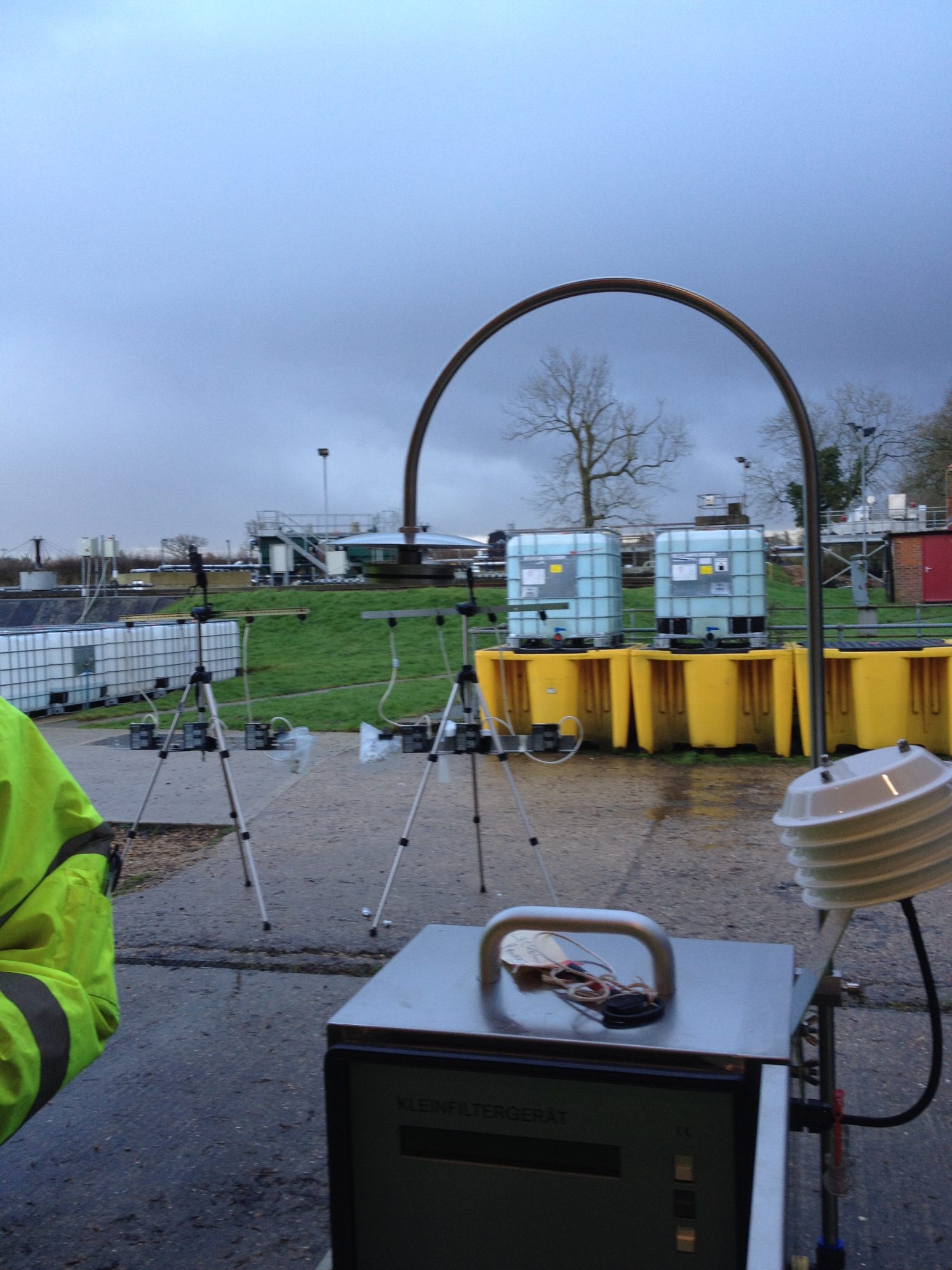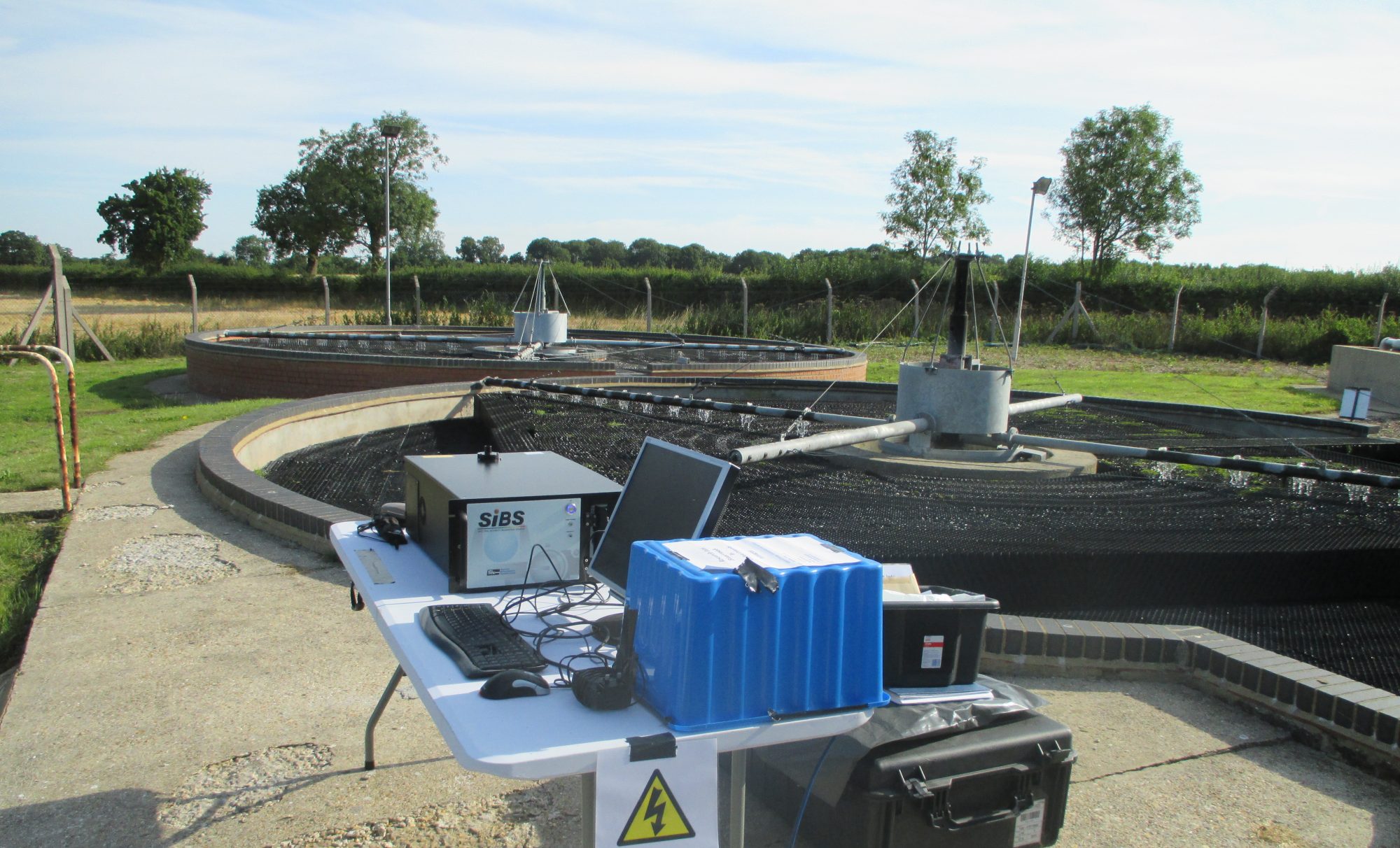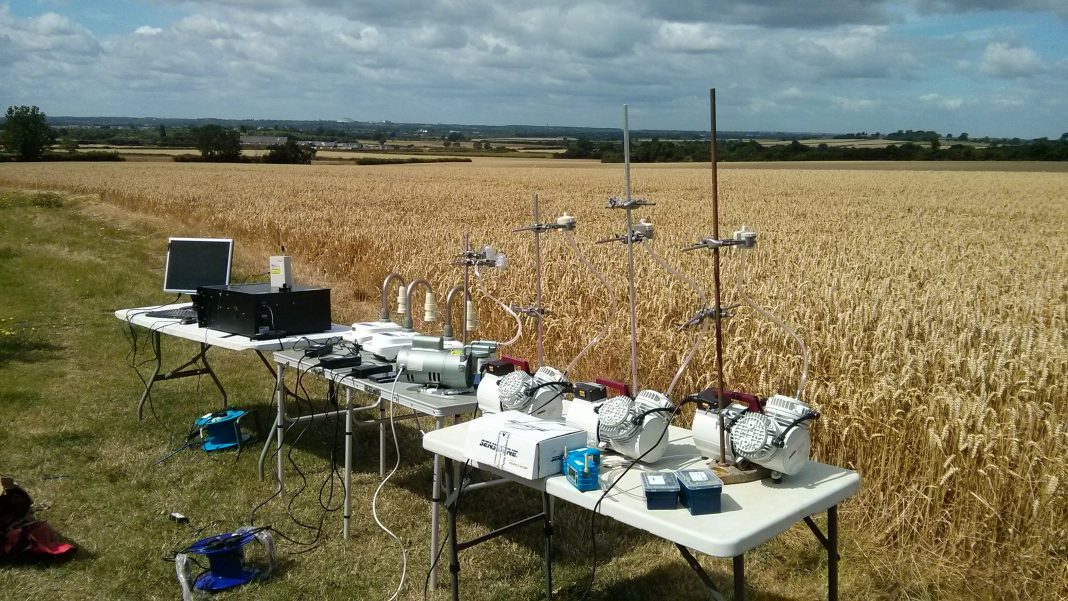Why is rapid measurement tools or fast identification of bioaerosols important and, what are the challenges and opportunities?
Bioaerosols are complex mixtures of airborne particles of biological origin (BioPM), which vary in size (~0.05-100 μm) and composition (viruses, bacteria, fungi/mould, pollen, cell fragments, and endotoxins). Many bioaerosols are of inhalable size (< 100 μm), but those < 10 μm are respirable and can penetrate deep into the respiratory system, making them a primary health concern(6). In addition to causing infectious diseases (e.g. tuberculosis and COVID-19), bioaerosols are associated with non-infectious diseases, such as hypersensitivity, allergies, chronic obstructive pulmonary disease (COPD) and asthma, that cause significant mortality and morbidity(4,7). Antimicrobial resistance (AMR) also poses an emerging and uncertain threat to public health worldwide, yet, AMR in bioaerosols is generally ignored leaving a major blindspot in the OneHealth approach to fighting AMR.
Why is characterising bioaerosols important?
Rapid, accurate and cost-effective methods for characterising bioaerosol concentration and composition are essential to identify risks and establish exposure thresholds. Such information is also important to inform on the appropriate ventilation and hygiene procedures for improved air quality and reduce risk (see Bioairnet resources for further information).
What are the challenges of fast identification of bioaerosols?
There are two major challenges 1) bioaerosol sampling and characterisation, 2) lack of evidenced exposure thresholds to inform regulators and health officials.
Standardized protocols for bioaerosol sampling and analysis do not currently exist and there is no ‘one-size fits all’ approach. This lack of consensus makes it challenging for regulators and health agencies to assess exposure and set meaningful guidelines for bioaerosol monitoring. Defining safe exposure limits for bioaerosols is further complicated because of the complex nature of bioaerosols, a lack of data on dose-response relationships and the health effects that vary from person to person and location to location.
Collecting sufficient material is also often problematic, especially in environments where there is low biomass. This issue is exacerbated as air sampling devices differ in their efficiencies, making comparisons difficult(13). Quantifying temporal and spatial trends across different environments in real-time is also challenging, and a sample design is crucial so a true representation of the diversity is reflected. This is especially important
with indoor air where concentrations can vary, due to differences in airflow and/or ventilation(9). Some microorganisms may also be preferentially recovered, or lose viability during sampling(13). Thus, the composition of the analysed sample may be very different from that at the time of sampling.
 Opportunities: A consensus on the most appropriate air sampling and analysis methods that is acceptable worldwide is urgently required. To do this, opportunities are needed for researchers and regulators to work together in developing more bespoke methods,
Opportunities: A consensus on the most appropriate air sampling and analysis methods that is acceptable worldwide is urgently required. To do this, opportunities are needed for researchers and regulators to work together in developing more bespoke methods,
tailored to the environment and microorganism being studied, in a regulatory context or health need. Often the regulatory or public health bodies are only interested in the viable (i.e. culturable) microorganisms but this is a biased snapshot which does not truly reflect the active or health-relevant bioaerosols in a given environment. To address this, we have produced a set of guidelines and recommendations for regulators and health officials to integrate new molecular methods(5). Yet, more research is needed, for example, on how bioaerosols interact with other air pollutants in relation to health. Such information is critical for urban planning, regulatory policy, exposure and risk management.

Recommendations for rapid measurement tools/fast identification of bioaerosols
Sampling: Both active and passive sampling can be deployed. The vast majority of samplers rely on filtration, impaction, impingement, and electrostatic precipitation, or combinations of these. However, all of the above may cause a loss of cell viability in some cases. Optimal sampling times for molecular analyses should be at least 120 min (3.36 m3 air) for filtration, and 20 min (6 m3 air) for impingement (e.g. for metagenomic/ barcoding analysis methods)(5).
For rapid sampling and temporal resolution, we recommend impingement, but if the highest microbial diversity and biomass is required, air filtration (over longer sampling periods) is recommended. Our recommended method for bioaerosol concentration for bacteria from liquid impingement is centrifugation, using phosphate buffered saline as the liquid matrix(5). Filters can also be used for concentrating samples(5), and have the advantage that the nucleic acids can be extracted directly(14). For the highest bacterial DNA yield recovery, we recommend polycarbonate filters with a phenol chloroform DNA extraction method(5). Polyethersulfone membrane filters are also useful as they dissolve directly into the buffer, removing the elution step and are amenable to molecular techniques(12,15). Recovery rates from filters can be improved by cutting them up and bead beating or vortexing the filters prior to DNA extraction (1,4,5).
Characterisation: Although culture-based techniques are relatively simple, inexpensive, and allow viable microorganisms to be isolated, they are slow, labour-intensive, and biased. Molecular methods such as High Throughput Sequencing and qPCR, provide rapid and detailed characterisation of air samples (including the fastidious pathogens). Further, increasing automation and portability means that these methods could be integrated into automated sensor networks providing near real-time data (as we already have for non-biological air pollution)(2). This would also provide the evidence base to set exposure thresholds for biological air pollution. Real-time measurement and identification of aerosol particles directly in the ambient air within seconds are also recommended where possible such as: Light-Induced Fluorescence (LIF), SwisensPoleno, Spectral Intensity Bioaerosol Sensor (SIBS) and Wideband Integrated Bioaerosol Sensors (WIBS)(8,10,13). These systems provide real-time data on local concentrations of airborne biological aerosol particles (pollen, spores etc.) as well as other particles. The use of blanks, controls and field blanks is also recommended. Meta-data on environmental conditions (e.g. temperature, relative humidity, air movement, ventilation, occupancy, activity etc) at each sampling location should also be recorded so changes in microbial diversity may be linked to specific environmental conditions or human activities(3).
Written by Corinne Whitby(1), Robert Ferguson(1), Alex Dumbrell(1), Ian Colbeck(1), Frederic Coulon(2), Zaheer Nasir(2).
(1) School of Life Sciences, University of Essex, Wivenhoe Park, Colchester, CO4 3SQ, UK.
(2) School of Water, Energy and Environment, Cranfield University, Cranfield, MK43 0AL, UK.
References
- Be NA et al (2014) Microbial Ecol., 69(2):346-355.
- Bohan D et al (2018) Next generation biomonitoring: Part 1. Academic Press.
- Cox J et al (2020) Aerosol Science and Technol, 54:5,572-584.
- Douglas P et al (2017) Waste Management 70:22-29.
- Ferguson RMW et al (2019) Mol. Ecol. Res., 19:672-690.
- Ghosh B et al (2015) Environ. Int., 1;85:254-72.
- Kim KY et al (2018) J. Environ. Sci., 67:23-35.
- Könemann T et al (2019) Atmos. Meas. Tech., 12:1337-1363.
- Luongo JC et al (2016) Indoor Air 26 (5):666-678.
- Nasir ZA et al (2019) Sci. Tot. Environ. 648:25-32.
- Pankhurst LJ et al (2012) FEMS Microbiol Ecol, 79(1), 229-239.
- Rahav E et al (2019) Atmosphere 10 (5):280.
- Whitby C et al (2022) Compendium of analytical methods for sampling, characterization and quantification of bioaerosols. In D. A. Bohan, & A. Dumbrell (Eds.), Functional Microbiomes (pp. 101-229). Adv in Ecol Res; 67, Academic Press Inc.
- Yoo K et al (2017) J. Environ. Sci. 51:234-247.
- Zhen H et al (2018) Sci. Tot. Environ. 621:939-947.

This work is licensed under Creative Commons Attribution-NonCommercial-NoDerivatives 4.0 International.


